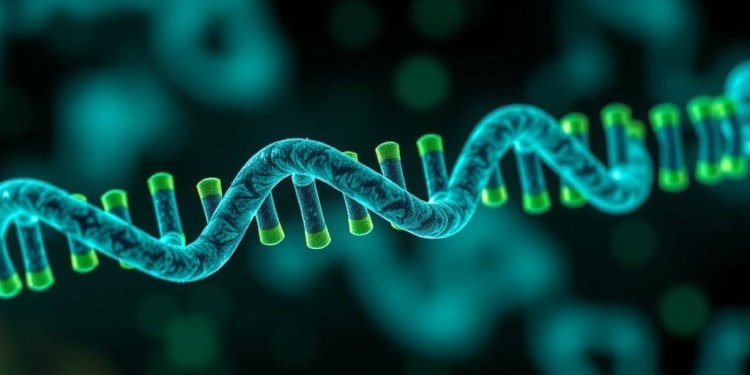
Researchers at Mass General Brigham and Beth Israel Deaconess Medical Center have unveiled an innovative gene editing tool dubbed STITCHR that promises to reshape the landscape of gene therapy. This new system stands out by enabling the precise insertion of therapeutic genes into specific genomic locations without triggering unwanted mutations—a significant advancement over existing gene editing technologies, notably CRISPR. The STITCHR system is composed entirely of RNA, thus streamlining the delivery process that typically involves both RNA and DNA components, which can complicate therapeutic applications.
CRISPR has undoubtedly transformed the field of genetics, offering powerful ways to edit DNA. Nevertheless, it has inherent limitations. For instance, it cannot target every location within the genome effectively. Furthermore, CRISPR is not designed to address the multitude of mutations linked with diseases such as cystic fibrosis, where thousands of genetic errors can undermine normal function. Co-senior author Omar Abudayyeh emphasizes the ambition behind establishing their lab, which was to explore methods for inserting large segments of DNA or even entire genes to supersede defective ones. Such a strategy could potentially allow the correction of multiple mutations associated with a disease using a single editing construct.
The genesis of STITCHR resides in the unique capabilities of retrotransposons—genetic elements also known as “jumping genes.” These elements possess an intrinsic mechanism to copy themselves and insert into new locations across the genome, a process the researchers recognized could be ingeniously repurposed for targeted gene editing. By carefully investigating various retrotransposons, the research team set out to identify candidates that could be reprogrammed for this purpose, taking advantage of their natural movement and insertion abilities.
Under the leadership of lead study author Christopher Fell, the investigative team conducted an extensive computational analysis of thousands of retrotransposons to pinpoint those with potential for reprogramming. After rigorous testing in the laboratory, they successfully narrowed their search down to a promising retrotransposon. By integrating this retrotransposon with a modified version of the CRISPR nickase enzyme, which creates single-strand breaks in DNA, the STITCHR tool was crafted to function as an efficient and precise gene insertion system.
The implications of STITCHR for gene therapy are profound. Traditional methods of gene editing often focus on correcting specific genetic errors, which may not be feasible for complex diseases characterized by numerous mutations. In contrast, STITCHR’s ability to insert entire genes opens up possibilities for single-step treatments that can address multiple mutations simultaneously. This advancement could significantly reduce the logistical challenges associated with delivering gene therapies and improving patient outcomes for a diverse range of genetic diseases.
Moreover, the research team aims to continually enhance the efficiency and specificity of STITCHR. Future endeavors include translating this technology into clinical applications, ultimately aiming to leverage its capabilities for human therapies. The promise of STITCHR lies not only in its current applications but also in its potential to lead to groundbreaking therapies that could address both rare and common diseases.
The exploration of basic biological principles has revealed exciting new avenues for innovation in cell engineering, particularly regarding gene therapy. As co-corresponding author Jonathan Gootenberg notes, harnessing insights from cellular biology can inspire the development of novel tools and techniques for medicine. Such innovations could pave the way for groundbreaking treatments that effectively tackle a range of genetic disorders while maximizing the safety and efficacy of therapeutic interventions.
Authorship of this groundbreaking research features a roster of talented individuals, including Fell, Gootenberg, and Abudayyeh, with contributions from a diverse array of researchers representing Mass General Brigham and additional institutions. The collaborative nature of this work underscores the importance of interdisciplinary approaches in advancing scientific discovery. The integration of diverse skill sets and perspectives often leads to more comprehensive solutions to complex medical problems—an essential factor in the rapidly evolving field of gene editing.
As the scientific community eagerly anticipates the future of STITCHR, it’s important to note the ethical and societal implications of such advanced gene editing technology. The potential for these tools to not only treat but also cure genetic diseases prompts important discussions about accessibility, regulations, and the moral implications of editing the human genome. Engaging in an open dialogue about the benefits and risks associated with gene therapy will be crucial as we navigate the complexities of this powerful technology.
Looking ahead, the team at Mass General Brigham is optimistic about the future applications of STITCHR in both research and clinical settings. By building on their foundational research, they hope to refine the capabilities of this gene editing tool further. As they work diligently towards translating the technology into therapeutic modalities, the vision for a healthier future emerges through the promise of advanced genetic therapies.
The journey of STITCHR from conceptualization to potential clinical application epitomizes the relentless pursuit of scientific excellence and innovation. By fostering a culture of inquiry, collaboration, and technological advancement, researchers are poised to tackle some of the world’s most challenging medical conditions. The scientific community, invigorated by this latest advancement, is excited to explore the vast potential of gene editing technologies to shape the future of health and medicine.
In conclusion, the emergence of tools like STITCHR could signify a paradigm shift in gene therapy. As researchers fine-tune and expand upon these technologies, they edge closer to realizing the dream of effective, accessible treatments for genetic diseases. Thanks to the ingenuity of scientists dedicated to pushing the boundaries of gene editing, the road ahead looks promising, filled with possibilities for therapeutic breakthroughs that could profoundly impact human health worldwide.
Subject of Research: Cells
Article Title: Reprogramming site-specific retrotransposon activity to new DNA sites
News Publication Date: 9-Apr-2025
Web References: Mass General Brigham
References: Nature
Image Credits: Mass General Brigham
Keywords
Gene editing, Cell therapies, Clinical research, Drug therapy, Gene targeting, Target mRNA, Enzymes
Tags: advanced genomic editingCRISPR limitationscystic fibrosis gene correctiongene editing technologygenetic mutations treatmentinnovative gene therapyMass General Brigham researchmultimutational diseasesprecise gene insertionRNA-based gene editingSTITCHR systemtherapeutic gene delivery





